Top 7 most dangerous and most isolated islands in the world
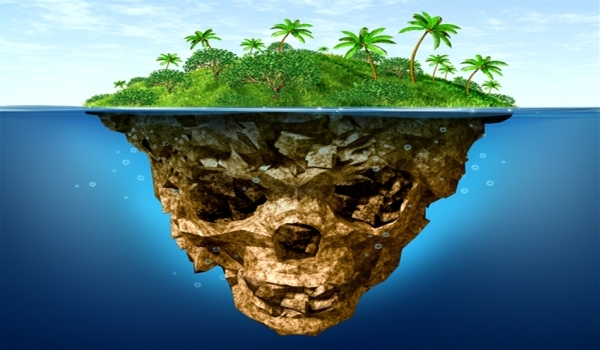
How many of us have dreamed of an island retreat away from everyday worries? If you've ever thought about a trip on one of the most isolated islands in the world, but you know how you could get there, now is your chance:
Mike Sowden, a specialist in travel, identified for American television CNN seven of the most isolated and dangerous island in the world, ideal for those seeking a haven away from the modern world, and explained how to reach them. Tristan da Cunha Tristan da Cunha group of islands that belongs to the United Kingdom, holds the record for the most remote inhabited archipelago in the world. The nearest land, South Africa, is to 2816 kilometers east and west South America is 3360 miles away.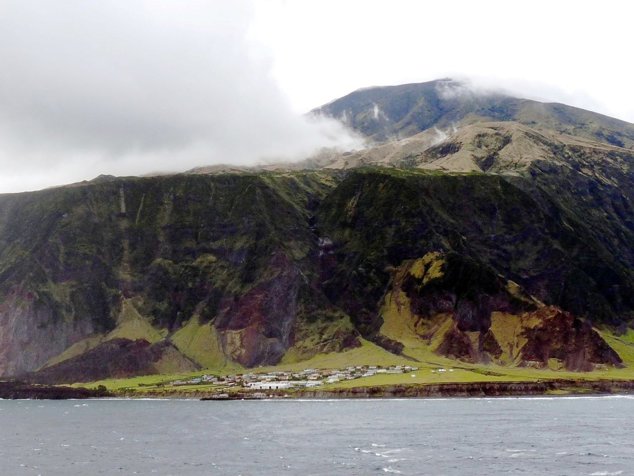 Only 262 people live on the islands annexed by Britain in 1816, and scientists believe that all are descended from 15 ancestors, eight males and seven females, who arrived on the island between 1816 and 1908. The main settlement is called "Edinburgh of the Seven Seas".
Only 262 people live on the islands annexed by Britain in 1816, and scientists believe that all are descended from 15 ancestors, eight males and seven females, who arrived on the island between 1816 and 1908. The main settlement is called "Edinburgh of the Seven Seas".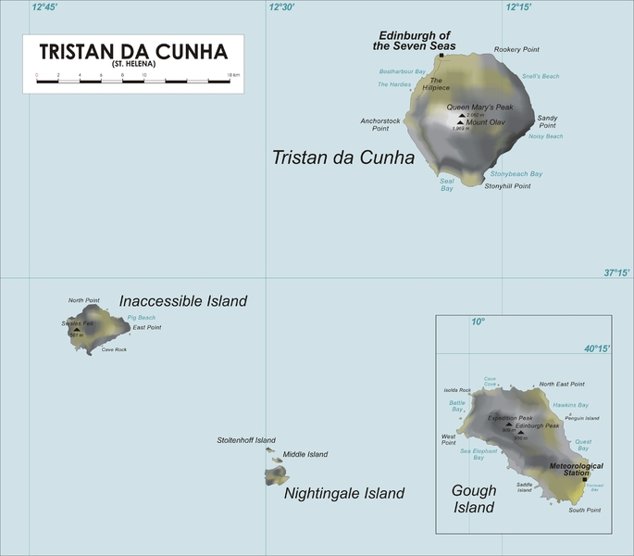 If you arrive on the island, do not expect very many options for entertainment: television arrived on Tristan da Cunha until 2001, and the only channels available on the island - BFBS 1 and BFBS 2 ( British Forces Broadcasting Service) - are for the armed forces UK.How to get on the island?
If you arrive on the island, do not expect very many options for entertainment: television arrived on Tristan da Cunha until 2001, and the only channels available on the island - BFBS 1 and BFBS 2 ( British Forces Broadcasting Service) - are for the armed forces UK.How to get on the island?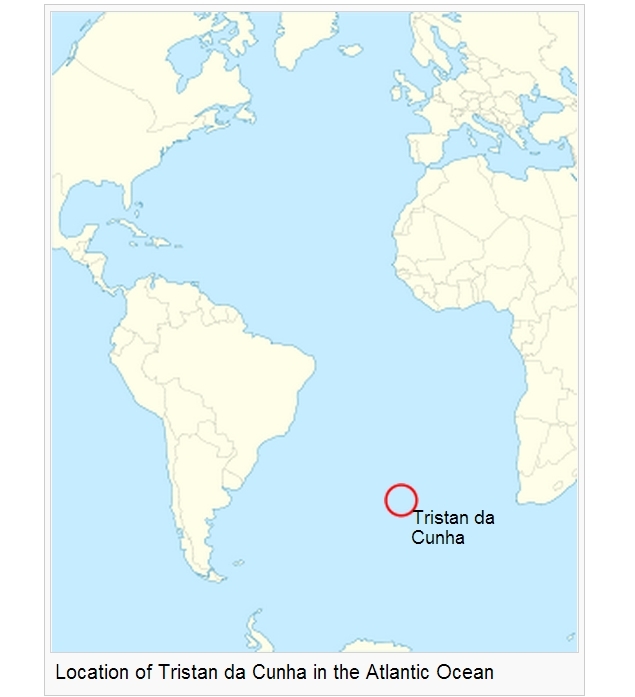 Official Site of the island Tristan da Cunha warn adventure seekers "tour packages travel there on your own, there are hotels, airports, nightclubs, restaurants, jet skis or ability to swim."However, if you want to visit the most remote inhabited island in the world, you can do it - but you need the approval of the Island Council and a certificate from the local police, documents can be obtained in about 40 days. After you obtain the necessary documents can hit the road to Tristan da Cunha. Annually starting in Cape Town (South Africa) 10 British vessels arriving in the island after a journey of about 5-6 days. The cost of return flights is U.S. $ 1,000, and the list of available ships can be found on the website - the official of the island . Bear Island
Official Site of the island Tristan da Cunha warn adventure seekers "tour packages travel there on your own, there are hotels, airports, nightclubs, restaurants, jet skis or ability to swim."However, if you want to visit the most remote inhabited island in the world, you can do it - but you need the approval of the Island Council and a certificate from the local police, documents can be obtained in about 40 days. After you obtain the necessary documents can hit the road to Tristan da Cunha. Annually starting in Cape Town (South Africa) 10 British vessels arriving in the island after a journey of about 5-6 days. The cost of return flights is U.S. $ 1,000, and the list of available ships can be found on the website - the official of the island . Bear Island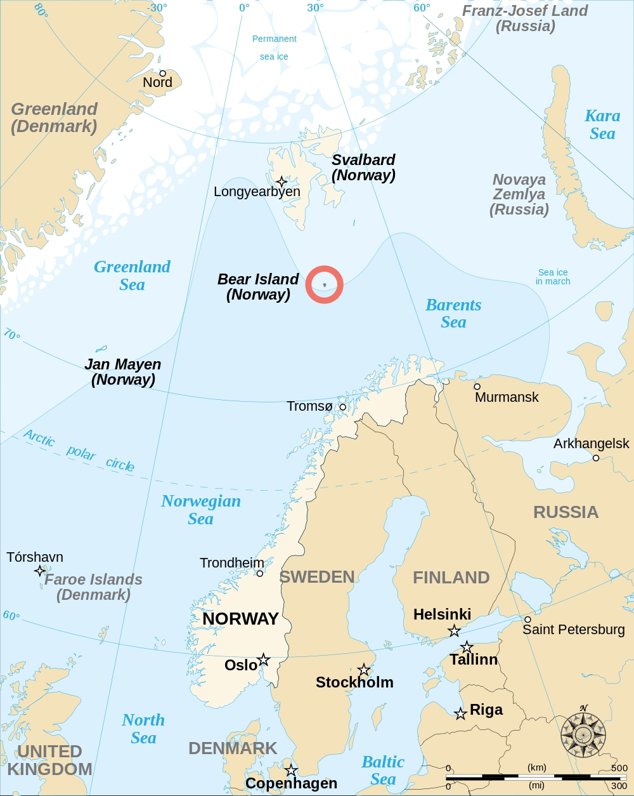 Bjørnøya Island, also known as the "Bear Island", is the southernmost island of the Svalbard Arctic archipelago, and is located 643 kilometers from European shores. Bjørnøya belongs Svalbard archipelago, despite the fact that is 240 miles south of the other islands of the archipelago.Despite the distance from the European continent and its nature barren island hosted more business during the past centuries, including mining, fishing and whaling. However, no human settlement established on its territory did not last more than a few years. Bjørnøya was declared a nature reserve in 2002, and today only people who live on the island meteorological station employees Herwighamna.
Bjørnøya Island, also known as the "Bear Island", is the southernmost island of the Svalbard Arctic archipelago, and is located 643 kilometers from European shores. Bjørnøya belongs Svalbard archipelago, despite the fact that is 240 miles south of the other islands of the archipelago.Despite the distance from the European continent and its nature barren island hosted more business during the past centuries, including mining, fishing and whaling. However, no human settlement established on its territory did not last more than a few years. Bjørnøya was declared a nature reserve in 2002, and today only people who live on the island meteorological station employees Herwighamna.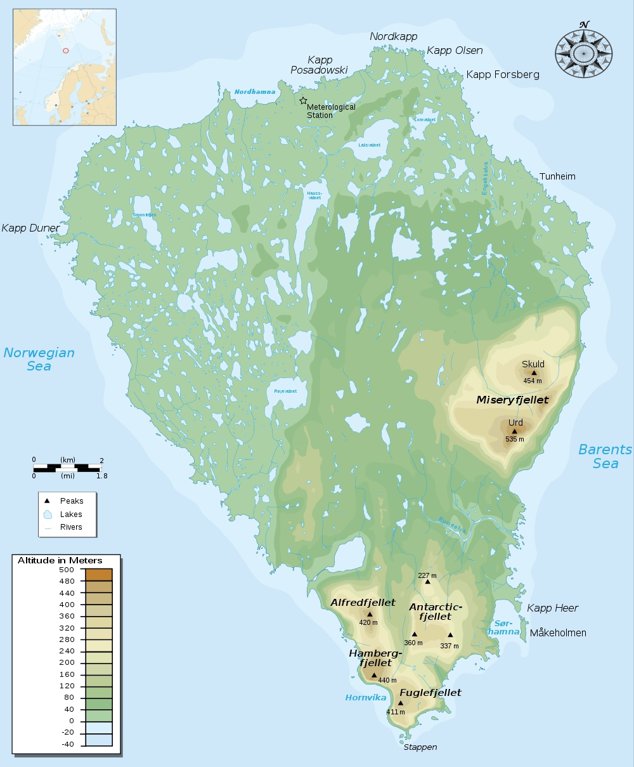 How to get on the island?
How to get on the island?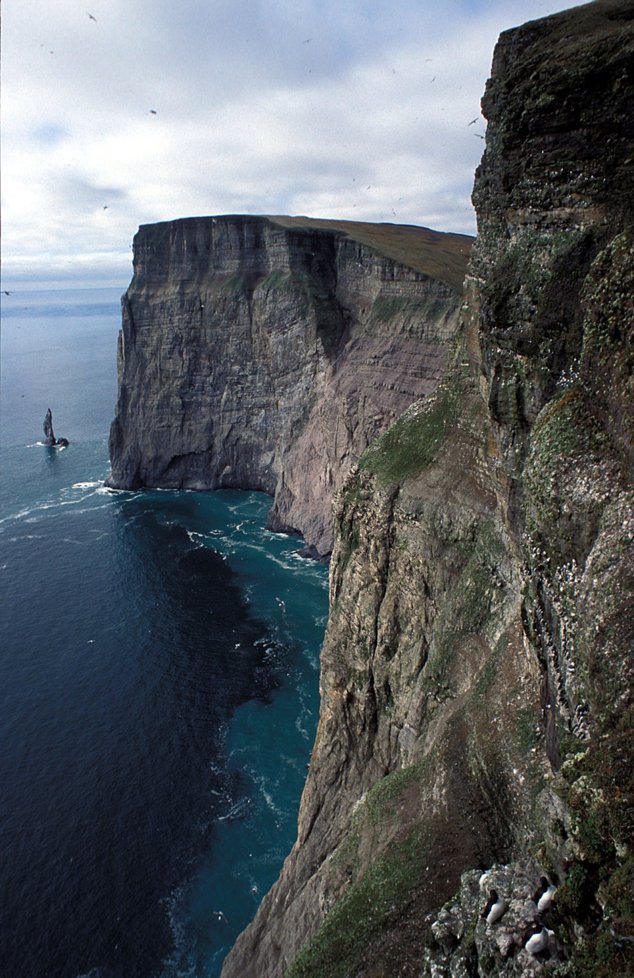 Those who want to reach Bear Island have many reasons to reconsider: dangerous rocks, lack of rain and that is 180 kilometers from the wreck of a Russian nuclear submarine, Komsomolets, which has two nuclear warheads still on board. Diving in the area showed that it still emits radioactive material is likely to be polluted surroundings.If this detail does not deter you, you first have to fly from Oslo and Tromso to Longyearbyen, Svalbard's capital, located on the west coast of Spitsbergen island. From here you can travel on Bear Island on board research vessels that rarely visit Bjørnøya, with a private boat or on board a ship to cruise . Bouvet
Those who want to reach Bear Island have many reasons to reconsider: dangerous rocks, lack of rain and that is 180 kilometers from the wreck of a Russian nuclear submarine, Komsomolets, which has two nuclear warheads still on board. Diving in the area showed that it still emits radioactive material is likely to be polluted surroundings.If this detail does not deter you, you first have to fly from Oslo and Tromso to Longyearbyen, Svalbard's capital, located on the west coast of Spitsbergen island. From here you can travel on Bear Island on board research vessels that rarely visit Bjørnøya, with a private boat or on board a ship to cruise . Bouvet  If Tristan da Cunha is the most remote inhabited island in the world, Bouvet Island holds the record for most inaccessible uninhabited island in the world.Its cliffs are steep and the surface is almost entirely covered by a glacier. In winter, the island is surrounded by sea ice. The nearest continent is Antarctica, at a distance of 1,600 miles south. Due to the harsh climate and terrain mostly covered with ice, vegetation is limited to lichens and mosses, higher plants lacking, so Bouvet Island may be considered as belonging to the Antarctic botanical zone.
If Tristan da Cunha is the most remote inhabited island in the world, Bouvet Island holds the record for most inaccessible uninhabited island in the world.Its cliffs are steep and the surface is almost entirely covered by a glacier. In winter, the island is surrounded by sea ice. The nearest continent is Antarctica, at a distance of 1,600 miles south. Due to the harsh climate and terrain mostly covered with ice, vegetation is limited to lichens and mosses, higher plants lacking, so Bouvet Island may be considered as belonging to the Antarctic botanical zone. Although the island is called the French explorer Jean-Baptiste Charles Bouvet by Lozier, it depends on the Norway in 1930.How to get on the island?
Although the island is called the French explorer Jean-Baptiste Charles Bouvet by Lozier, it depends on the Norway in 1930.How to get on the island?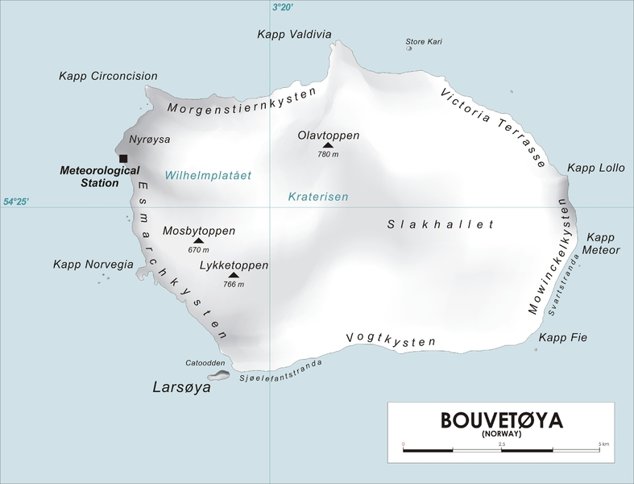 The island is a nature reserve, so you need to give good reasons Norwegian authorities for permission to visit.Even if you manage to get the approval of a research vessel to turn to Bouvet Island, you'll need a helicopter to get on it, as has no port. Bishop Rock This small rock which is 49 kilometers from England is recorded in the Guinness Book of Records for being the smallest island in the world that is building. Bishop Rock is the extreme western Atlantic Isles of Scilly Cornwall peninsula, 45 km from the extreme west of Britain.In 1847, British engineers started working on building an iron lighthouse on the rock, but the building was knocked down by the waves. The British did not leave, so they built a new headlamp lit up for the first time in 1858. It lasts until today.British Bishop Rock is considered a symbol of their country, which defines the island nation. Lighthouse shines on this rock at a distance of 24 miles, helping sailors for more than 150 years.British authorities in 1976 built a helipad on the roof right headlight, so that today visitors can visit this unique island without using a boat.In 1991, the Bishop Rock lighthouse was modernized its operation is fully automated. Last lighthouse keeper left the island in December 1992. Today the lighthouse can be operated on-site control center located at the third floor, or remotely from our office in Harwich, Essex. Lighthouse has 10 floors and can accommodate up to four guests for three weeks.How to get on the island?
The island is a nature reserve, so you need to give good reasons Norwegian authorities for permission to visit.Even if you manage to get the approval of a research vessel to turn to Bouvet Island, you'll need a helicopter to get on it, as has no port. Bishop Rock This small rock which is 49 kilometers from England is recorded in the Guinness Book of Records for being the smallest island in the world that is building. Bishop Rock is the extreme western Atlantic Isles of Scilly Cornwall peninsula, 45 km from the extreme west of Britain.In 1847, British engineers started working on building an iron lighthouse on the rock, but the building was knocked down by the waves. The British did not leave, so they built a new headlamp lit up for the first time in 1858. It lasts until today.British Bishop Rock is considered a symbol of their country, which defines the island nation. Lighthouse shines on this rock at a distance of 24 miles, helping sailors for more than 150 years.British authorities in 1976 built a helipad on the roof right headlight, so that today visitors can visit this unique island without using a boat.In 1991, the Bishop Rock lighthouse was modernized its operation is fully automated. Last lighthouse keeper left the island in December 1992. Today the lighthouse can be operated on-site control center located at the third floor, or remotely from our office in Harwich, Essex. Lighthouse has 10 floors and can accommodate up to four guests for three weeks.How to get on the island?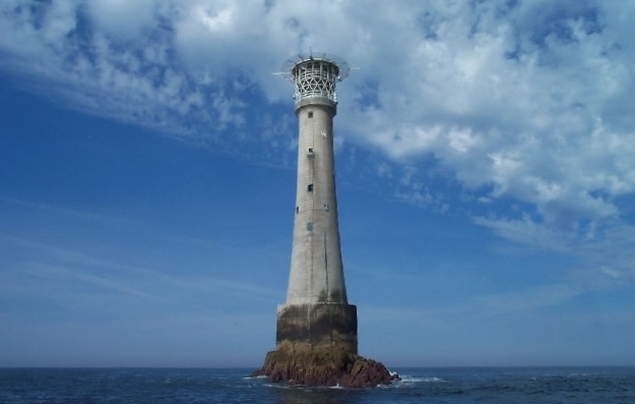 Visit the most south-westerly point in Britain is surprisingly easy: Association St. Mary's Boatmen hold races every day from St. Mary, the largest island of Scilly arhipeagul the cost of a ticket is £ 16. Be prepared, however: always troubled waters near the islands that face the Atlantic alone and in winter you are likely to face a storm of proportions. Boreray
Visit the most south-westerly point in Britain is surprisingly easy: Association St. Mary's Boatmen hold races every day from St. Mary, the largest island of Scilly arhipeagul the cost of a ticket is £ 16. Be prepared, however: always troubled waters near the islands that face the Atlantic alone and in winter you are likely to face a storm of proportions. Boreray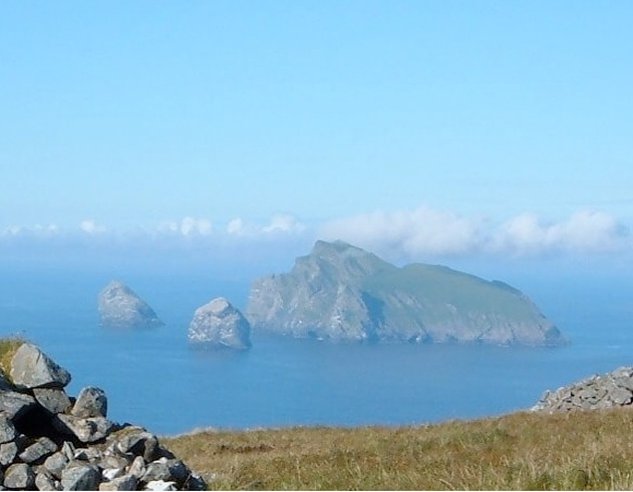 We love Scotland, but you feeling stronger? If you head west beyond the outer Hebrides, St discover archipelago.North Atlantic Kilda. In 1986, the islands became the first place in Scotland which was included in the UNESCO World Heritage. They were considered universal heritage due to their natural beauty, standing out by some of the highest cliffs in Europe and the colonies of rare birds.
We love Scotland, but you feeling stronger? If you head west beyond the outer Hebrides, St discover archipelago.North Atlantic Kilda. In 1986, the islands became the first place in Scotland which was included in the UNESCO World Heritage. They were considered universal heritage due to their natural beauty, standing out by some of the highest cliffs in Europe and the colonies of rare birds.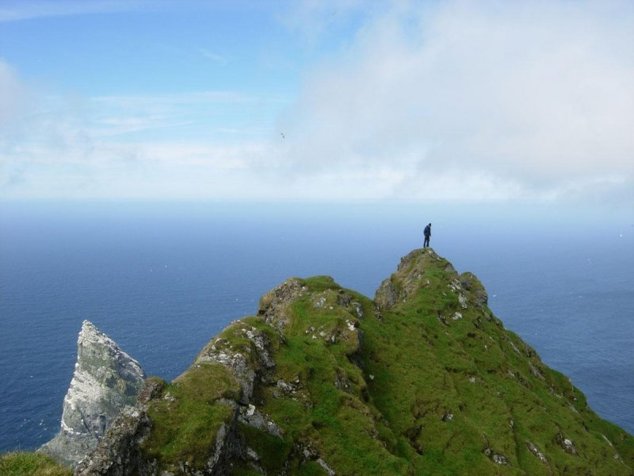 Researchers were surprised to discover the islands located 100 kilometers from Great Britain showing that human remains have been inhabited for 2,000 years despite unfavorable conditions. Boreray the most "unfriendly" island of St. Kilda was inhabited since the Iron Age. "Agriculture in one of the most remote and unfriendly North Atlantic islands represent a grueling and harsh existence. If we take into account the steep slopes of the island impossible, realize that it is amazing that people have tried to live on this island, "commented archaeologists from the Royal Commission on the Ancient and Historical Monuments of Scotland , who discovered the remains of settlements human.How to get on the island?
Researchers were surprised to discover the islands located 100 kilometers from Great Britain showing that human remains have been inhabited for 2,000 years despite unfavorable conditions. Boreray the most "unfriendly" island of St. Kilda was inhabited since the Iron Age. "Agriculture in one of the most remote and unfriendly North Atlantic islands represent a grueling and harsh existence. If we take into account the steep slopes of the island impossible, realize that it is amazing that people have tried to live on this island, "commented archaeologists from the Royal Commission on the Ancient and Historical Monuments of Scotland , who discovered the remains of settlements human.How to get on the island?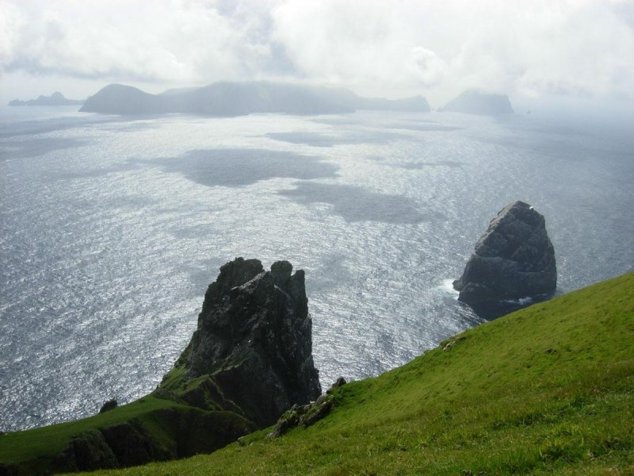 Because Boreray island was bequeathed in 1957 by the National Trust for Scotland (NTS) , an organization that protects natural and cultural heritage of Scotland, you will need to get its approval to proceed. Even if you get the road to Boreray will not be easy. Rough and stormy sea coast will be in the way, and statistics are not encouraging: in 1957, when NTS took over the island, many more people were able to conquer Everest but failed to reach the Boreray. North Sentinel
Because Boreray island was bequeathed in 1957 by the National Trust for Scotland (NTS) , an organization that protects natural and cultural heritage of Scotland, you will need to get its approval to proceed. Even if you get the road to Boreray will not be easy. Rough and stormy sea coast will be in the way, and statistics are not encouraging: in 1957, when NTS took over the island, many more people were able to conquer Everest but failed to reach the Boreray. North Sentinel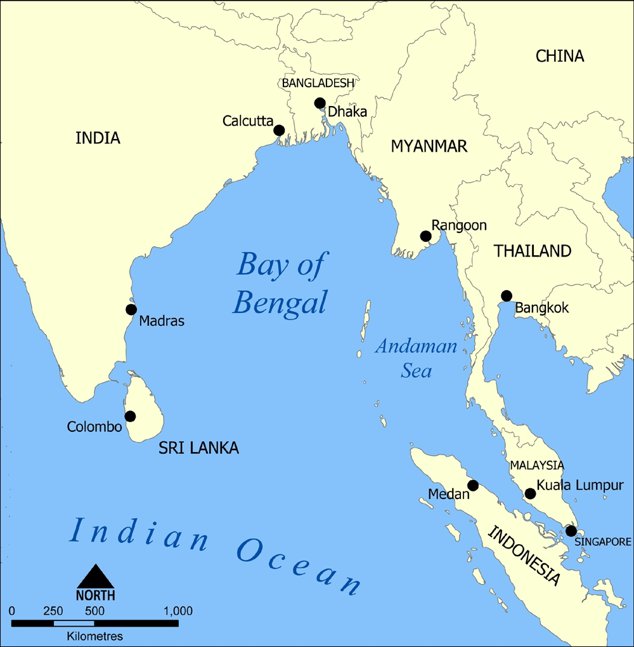 North Sentinel is one of the 572 islands that form the Andaman chain in the Bay of Bengal, situated in the Indian Ocean. The island is 650 kilometers from Myanmar and is surrounded by dangerous reefs, but this is why North Sentinel intimidating, but its inhabitants.Sentinelezii are the most isolated civilization in the world and will not have anything to do with the modern world.How to get on the island?
North Sentinel is one of the 572 islands that form the Andaman chain in the Bay of Bengal, situated in the Indian Ocean. The island is 650 kilometers from Myanmar and is surrounded by dangerous reefs, but this is why North Sentinel intimidating, but its inhabitants.Sentinelezii are the most isolated civilization in the world and will not have anything to do with the modern world.How to get on the island?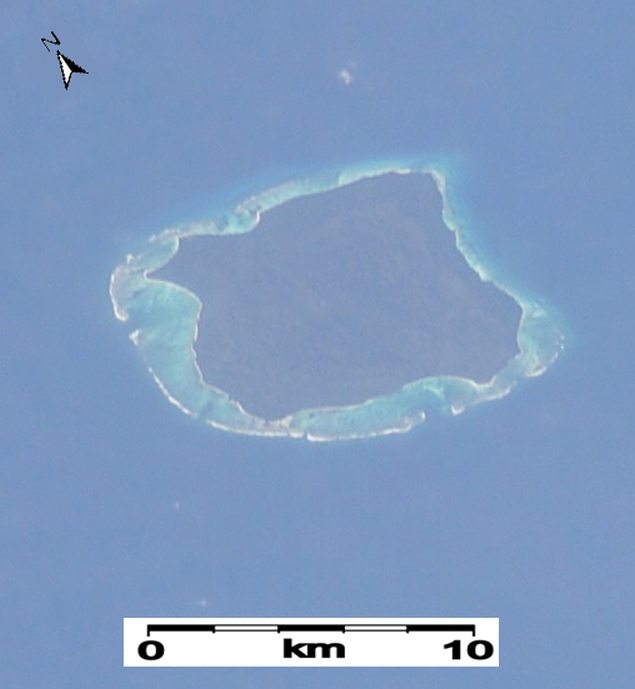 With the exception of Indian anthropologist, who managed to befriend islanders North Sentinel after 24 years of effort, no one was able to enter the island. Helicopter sent by the authorities after the devastating tsunami of 2004 was greeted with arrows and two poachers who were too close to the island in 2006 were killed. Indian authorities have completely banned all travel distances less than five kilometers from the island.If you want to learn more about this fascinating population, living here for over 60,000 years and that is the last tribe preneolitic the world, read the story in the article The isolated civilization in the world: the sentinelez? . Rockall
With the exception of Indian anthropologist, who managed to befriend islanders North Sentinel after 24 years of effort, no one was able to enter the island. Helicopter sent by the authorities after the devastating tsunami of 2004 was greeted with arrows and two poachers who were too close to the island in 2006 were killed. Indian authorities have completely banned all travel distances less than five kilometers from the island.If you want to learn more about this fascinating population, living here for over 60,000 years and that is the last tribe preneolitic the world, read the story in the article The isolated civilization in the world: the sentinelez? . Rockall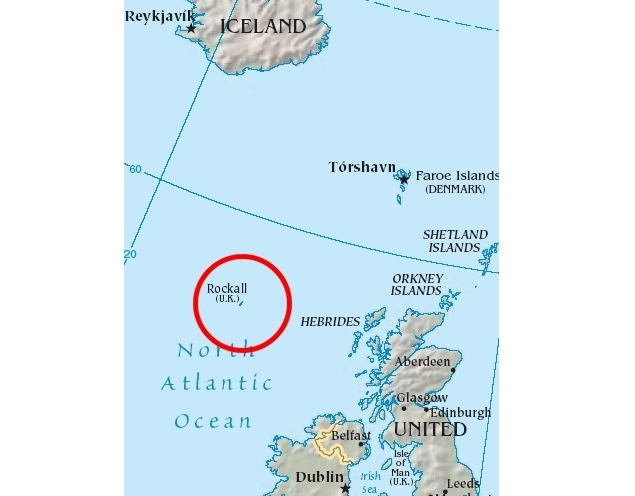 If island Boreray not seem dangerous enough, you can try to go to 300 kilometers to the west, where there is rock Rockall. The island is the top of an extinct volcano that rises 20 meters above sea level in an area where waves reach to 29 meters.
If island Boreray not seem dangerous enough, you can try to go to 300 kilometers to the west, where there is rock Rockall. The island is the top of an extinct volcano that rises 20 meters above sea level in an area where waves reach to 29 meters.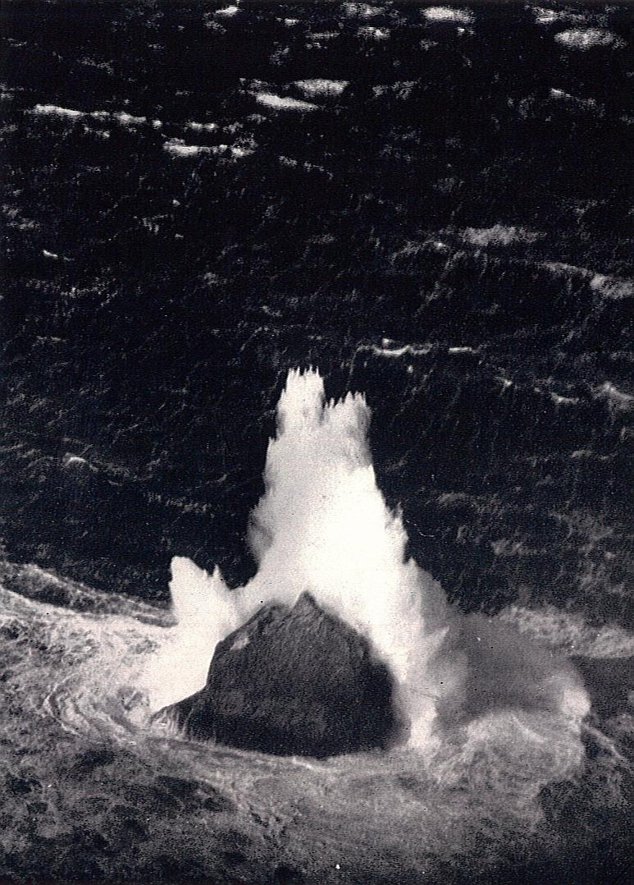 This island made ??history in 1955 as the last territorial conquest of the British Empire. Britain's Queen Elizabeth authorized the annexation of the islands on September 14, 1955, and on 18 September a crew of two Royal Marines, a naturalist and a commander of the Royal Navy raised the British flag over the island and cemented a plaque announcing its membership the United Kingdom. At 10:16, Commander Desmond Scott became the last sailor who spoke the words that made ??history: " In the name of Her Majesty Queen Elizabeth II, I hereby take possession of this Island of Rockall ". The island was annexed as a result of concerns raised at the time of the Cold War on the fact that Soviet forces would be able to use this rock to spy on British nuclear tests.
This island made ??history in 1955 as the last territorial conquest of the British Empire. Britain's Queen Elizabeth authorized the annexation of the islands on September 14, 1955, and on 18 September a crew of two Royal Marines, a naturalist and a commander of the Royal Navy raised the British flag over the island and cemented a plaque announcing its membership the United Kingdom. At 10:16, Commander Desmond Scott became the last sailor who spoke the words that made ??history: " In the name of Her Majesty Queen Elizabeth II, I hereby take possession of this Island of Rockall ". The island was annexed as a result of concerns raised at the time of the Cold War on the fact that Soviet forces would be able to use this rock to spy on British nuclear tests.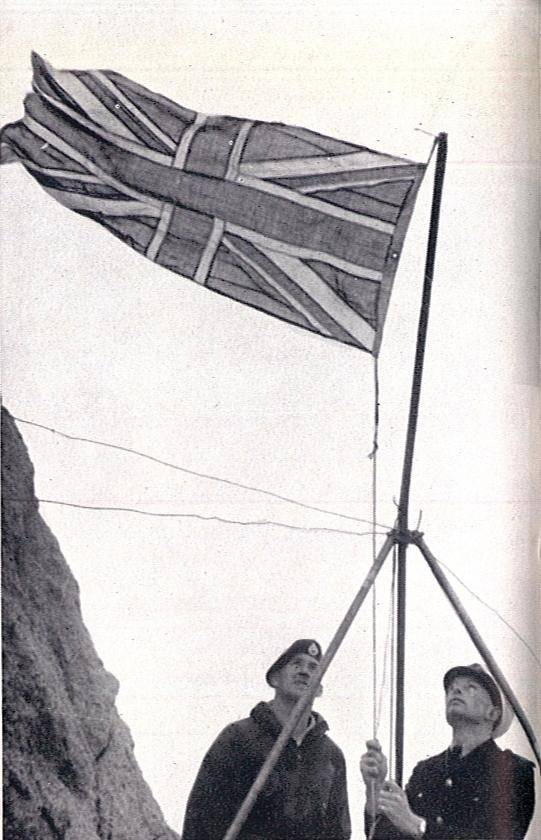 Between May 26 and July 4, 1985, a former SAS soldier in the forces, Tom McClean, lived on Rockall to strengthen the legal claims of Great Britain on this island. His efforts were not in vain: Today experts estimate that Rockall rights could be worth 100 billion pounds, because it is in an area rich in oil and natural gas.In June 1997, Greenpeace sent a crew to the island to protest against oil exploitation. Representatives of environmental organizations are sticking to turn a plate on the rock island near the assembled representatives of Great Britain. In this and today you can read these words: "Let the sun and wind do off their work. Leave the oil beneath the waves" (Let the sun and wind do their job. Allow the oil to remain below the waves).How to get on the island?
Between May 26 and July 4, 1985, a former SAS soldier in the forces, Tom McClean, lived on Rockall to strengthen the legal claims of Great Britain on this island. His efforts were not in vain: Today experts estimate that Rockall rights could be worth 100 billion pounds, because it is in an area rich in oil and natural gas.In June 1997, Greenpeace sent a crew to the island to protest against oil exploitation. Representatives of environmental organizations are sticking to turn a plate on the rock island near the assembled representatives of Great Britain. In this and today you can read these words: "Let the sun and wind do off their work. Leave the oil beneath the waves" (Let the sun and wind do their job. Allow the oil to remain below the waves).How to get on the island?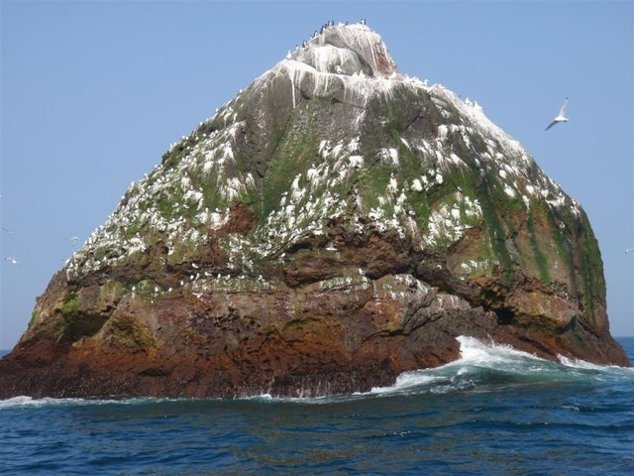 Throughout history, more than 100 people arrived on Rockall, and only four can boast that they have slept there.Those who managed this record founded The Rockall Club , among whom are automatically enrolled bold visiting this island. If you want to count among its site - the club visits Rockall warns that "are difficult, time dependent and are not cheap. A walk on the Rockall is a rare phenomenon that requires experience, specialized equipment, good weather and good luck. "If you want to try your luck, experts recommend scheduling contact the company Kilda Cruises , led to complete 100% of the attempts to reach the Rockall.
Throughout history, more than 100 people arrived on Rockall, and only four can boast that they have slept there.Those who managed this record founded The Rockall Club , among whom are automatically enrolled bold visiting this island. If you want to count among its site - the club visits Rockall warns that "are difficult, time dependent and are not cheap. A walk on the Rockall is a rare phenomenon that requires experience, specialized equipment, good weather and good luck. "If you want to try your luck, experts recommend scheduling contact the company Kilda Cruises , led to complete 100% of the attempts to reach the Rockall.
You've added this content to your favorites.

Post your comment
Load More
